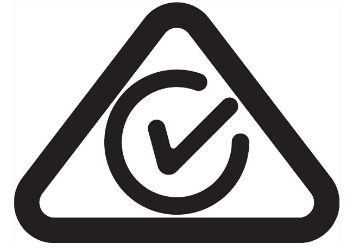1. The new decree came into effect on March 1, 2013.
2. SAA certification and C-Tick certification will be phased out and replaced by RCM certification, which covers safety regulations and EMC (C-TIck may still be applicable to some low-power wireless products).
3. All electronic products will be divided into three categories: High, medium, and low Risk. We do not have detailed information on the division of the scope. Generally speaking, battery-driven products with voltages below 12V are low-risk, 240V standard voltage products are medium-risk, and high-voltage products are high-risk. The buffer period for low-risk products is 6 months, and the buffer period for medium and high-risk products is 3 years (this period is recommended by the relevant Australian associations, but the government has not yet confirmed the specific laws).
4. RCM certification can only be applied by a local company in Australia, and the company must apply for an RCM number to the Australian government. Chinese manufacturers and exporters can apply for IEC or AS/NZS reports in their own name, but the report must be handed over to Australian importers to apply for RCM. The application fee for registration is 75 Australian dollars per product per trademark per year (for example, a company in Australia has two trademarks: A and B, and he imported the exact same batch of products from China, half of which are marked with the trademark of A, and the other with the trademark of A. B's trademark, that means you have to pay an annual registration fee of 150 Australian dollars).
5. According to the expert's opinion, since the importer will bear the risk of substandard product quality (responsible party), and non-Australian companies cannot directly apply for RCM certification. It is estimated that more and more small-scale Australian companies will change the practice of making reports and applying for SAA at the expense of Chinese manufacturers in order to reduce costs. They will tend to designate laboratories with certain capabilities and prestige to provide insurance reports and test data, and then they will apply for Australian RCM certification.
6. In theory, an Australian laboratory can also act as an applicant to help a company obtain RCM accreditation. However, according to the expert's opinion, due to the greater legal responsibility, it is estimated that most Australian laboratories will not take this risk on their own initiative, and even if they do, the related costs may be relatively high.
7. Australia and New Zealand are introducing the RCM mark to achieve a unified identification of electrical products. The mark is a trademark owned by the regulatory agencies in Australia and New Zealand, indicating that the product meets both safety and EMC requirements and is not mandatory.

1. Safety (product safety certification):
Product safety certification consists of two parts: electrical products are divided into regulated electrical (Prescribed Product) and non-regulated products (Non-prescribed product).
Controlled electrical products are classified according to AS/NZS4417.2, including electric heating equipment, refrigeration equipment, power tools, spare parts, etc. Among them, the three issuing units Queensland, New South Wales and Victoria are the most active in the certification process. Regulated electrical appliances must obtain a Certificate of Approval issued by the monitoring department, and require identification (must be marked with a certificate number) . The first letter of the certificate number shows which state or territory the certificate was issued from. like:
a) Q04051 (Queensland) --- Q Number
b) W2015 (Western Australia) --- W Number
c) V03101 (Victoria) --- ESV Certificate V Number
d) NSW18099 (New South Wales, New South Wales) --- DOFT Certificate NSW Number
Non-regulated electrical appliances can be sold directly without certification, but the manufacturer must ensure that the electrical safety of the product complies with the Australian standard AS/NZS3820:1998 (Essential Safety Requirements for Low Voltage Electrical Equipment); the monitoring department will issue compliance for products that meet the standard requirements. Certificate (Certificate of Suitability). Electrical products that have obtained a certificate of compliance can be marked with a certificate number. The last letter of the certificate shows which state or region the certificate was issued by, such as:
a) CS/431/Q (Queensland)
b) CS/108/NSW (New South Wales)
2.EMC (Electromagnetic Compatibility)
Australia's electromagnetic compatibility compliance plan is based on the 1992 Radio Communications Act (Radio Communications ACT 1992), which covers a wide range of products, including motor-driven and heat-generating electrical products, power tools and similar products, lamps and similar equipment, TV receivers and audio equipment, information technology products, industrial scientific and medical equipment, ignition engines and arc welding equipment, etc. The plan divides products into three categories according to the danger of electromagnetic interference generated by the products. The second and third categories of products must be marked with C-Tick. However, no matter which category the product belongs to, it must comply with the relevant EMC standards.
Class I products: Products that have only a slight impact on devices using the wireless spectrum, such as manual switches, simple relays, brushless squirrel-cage induction motors, AC power/power transformers, resistors, etc. Such products can voluntarily apply for the use of the C-Tick mark during production and sales.
Class II products: Products that have a greater impact on devices using the wireless spectrum, such as microprocessors or clocked digital devices, rectifier or slip-ring motors, arc welding equipment, switching power supplies, dimmers, and motors Telecommunications terminal equipment of the category Speed Controllers, Information Technology (CISPR 22) (changed from Category 3 to Category 2 from 7 November 2003).
Three categories of products: products that have a serious impact on devices using the wireless spectrum, such as industrial, scientific and medical equipment group 2 (CISPR11).